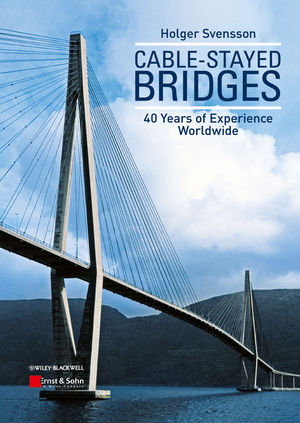
ESTRUCTURAS DE MADERA DISEÑO Y CALCULO
Ramon Arguelles
Su contenido cubre prácticamente todos los aspectos que intervienen en el proyecto y cálculo de estructuras de madera acompañado de abundantes dibujos a línea, gráficos y tablas que contribuyen a lograr su carácter eminentemente técnico.
El libro se destina principalmente a profesionales del cálculo de estructuras -arquitectos, aparejadores e ingenieros- pero al ser sus autores profesores universitarios han enfocado el texto también para la docencia, pensando en la creciente inclusión de asignaturas de cálculo y construcción con madera en las escuelas técnicas.
El libro se organiza en una primera parte expositiva formada por 18 capítulos y una segunda, formada por 16 anexos que profundizan en algunos aspectos concretos, sin distraer así de la línea argumental del texto.
Este libro recoge los planteamientos más avanzados de la normativa actual: el eurocódigo 5 -proyecto de estructuras de madera-, emplea el método de los estados límites y coeficientes parciales de seguridad, los cuales coinciden con el enfoque de norma básica de la edificación española sobre estructuras de madera y el Código Técnico CTE
INDICE
CAPITULO 1: INTRODUCCIÓN1.1 GENERALIDADES
1.2 ANATOMÍA DE LA MADERA .
1.3 TENSIONES DE CRECIMIENTO
1.4 ANISOTROPÍA .
CAPITULO 2: PROPIEDADES FÍSICAS Y MECÁNICAS .
2.1 PROPIEDADES FÍSICAS .
2.2 PROPIEDADES MECÁNICAS
CAPITULO 3: BASES DE CALCULO 3.1 INTRODUCCIÓN
3.2 FACTORES QUE INFLUYEN EN LAS PROPIEDADES MECÁNICAS
3.3 PROPIEDADES DEL MATERIAL
3.4 ACCIONES
CAPITULO 4: DEFORMACIONES
4.1 CALCULO DE LA DEFORMACIÓN
4.2 L1MITACION DE LA DEFORMACIÓN
CAPITULO 5: COMPROBACIÓN DE SECCIONES.
5.1 GENERALIDADES Y NOTACIÓN
5.2 COMPROBACIÓN DE TENSIONES PARALELAS A LA FIBRA
5.3 COMPROBACIÓN DE LAS TENSIONES TANGENCIALES
5.4 COMPROBACIÓN DE LAS TENSIONES PERPENDICULARES
A LA FIBRA
CAPITULO 6: INESTABILIDAD EN PIEZAS DE MADERA6.1 COLUMNAS
6.2 VIGAS
CAPITULO 7: COMPROBACIONES SINGULARES EN PIEZASDE MADERA LAMINADA DE SECCIÓN VARIABLE
O DE DIRECTRIZ CURVA
7.1 INTRODUCCIÓN
7.2 CANTO VARIABLE Y DESVÍO DE LA FIBRA
7.3 PIEZAS CURVAS
7.4 ZONAS DE VÉRTICE.
CAPITULO 8: PREDIMENSIONADO .
8.1 INTRODUCCIÓN
82 ESTRUCTURAS DE MADERA LAMINADA ENCOLADA
8.3 ESTRUCTURAS DE MADERA ASERRADA
CAPITULO 9: UNIONES. CONSIDERACIONES GENERALES9.1 INTRODUCCIÓN
9.2 CONSIDERACIONES GENERALES DE CALCULO
9.3 CONSIDERACIONES SOBRE EL EFECTO DE LA
HINCHAZÓN y MERMA
9.4 TRACCIÓN PERPENDICULAR A LA FIBRA EN LAS UNIONES .
CAPITULO 10: UNIONES TRADICIONALES
10.1 GENERALIDADES
10.2 TIPOLOGÍA
10.3 CALCULO
CAPITULO 11: ELEMENTOS DE FIJACIÓN DE TIPO CLAVIJA
l1.1 INTRODUCCIÓN
11.2 DESCRIPCIÓN DE LOS MEDIOS DE UNIÓN
11.3 CALCULO EN SOLICITACIÓN DE CORTE
11.4 DISPOSICIONES CONSTRUCTIVAS
11.5 CALCULO EN SOLICITACIONES AXIALES Y COMBINADAS
CAPITULO 12: UNIONES CON CONECTORES Y PLACAS CLAVO12.1 GENERALIDADES
12.2 TIPOS DE CONECTORES
12.3 CALCULO DE CONECTORES DE ANILLO Y PLACA
12.4 CALCULO DE CONECTORES DENTADOS
12.5 CONECTORES DE PLACAS DENTADAS
CAPITULO 13: UNIONES CON BARRAS ENCOLADAS
13.1 INTRODUCCIÓN
13.2 MATERIALES E INSTALACIÓN
13.3 COMPORTAMIENTO MECÁNICO .
13.4 CAPACIDAD DE CARGA
CAPITULO 14: ORGANIZACIÓN CONSTRUCTIVA Y
ESTABILIDAD DE LA CONSTRUCCIÓN14.1 INTRODUCCIÓN .
14.2 ESTABILIDAD DE LA CONSTRUCCIÓN
14.3 CONSIDERACIONES CONSTRUCTIVAS
14.4 EFECTO DE DIAFRAGMA
CAPITULO 15: DETALLES CONSTRUCTIVOS15.1 CRITERIOS FUNDAMENTALES DE DISEÑO
15.2 APOYO DE PILARES
15.3 APOYO DE VIGAS EN MUROS DE FÁBRICA ELEMENTOS DE HORMIGÓN
15.4 UNIÓN ENTRE VIGA Y PILAR
15.5 ENLACES ARTICULADOS EN VIGAS CONTINUAS
15.6 UNIÓN ENTRE VIGA Y CORREA
15.7 NUDOS DE PÓRTICOS Y ARCOS
15.8 UNIONES RÍGIDAS DE CONTINUIDAD DE PIEZAS
CAPITULO 16: RESISTENCIA AL FUEGO
16.1 INTRODUCCIÓN
16.2 COMPORTAMIENTO DE LA MADERA AL FUEGO
16.3 IGNIFUGACIÓN DE LA MADERA
16.4 VELOCIDAD DE CARBONIZACIÓN
16.5 RECUBRIMIENTOS DE PROTECCIÓN
16.6 BASES DE CALCULO
16.7 MÉTODOS DE CALCULO EN SITUACIONES DE INCENDIO
16.8 UNIONES 379
CAPITULO 17: PROTECCIÓN DE LA MADERA17.1 INTRODUCCIÓN
17.2 AGENTES DE DETERIORO
17.3 CLASES DE RIESGO
17.4 MEDIDAS CONSTRUCTIVAS DE PROTECCIÓN PASIVA
17.5 PROPIEDADES DE LA MADERA RELATIVAS A LA PROTECCIÓN
17.6 TRATAMIENTOS DE PROTECCIÓN PREVENTIVA
17.7 TRATAMIENTOS DE PROTECCIÓN CURATIVA
17.8 PROTECCIÓN CONTRA LA CORROSIÓN DE LOS ELEMENTOS METÁLICOS
CAPITULO 18: EJEMPLOS DE CALCULO DE ESTRUCTURAS TIPO18.1 FORJADO LIGERO DE MADERA
183 CERCHA DE PENDOLÓN Y TORNAPUNTAS
18.2 FORJADO PESADO DE MADERA
184 VIGA A DOS AGUAS DE MADERA LAMINADA
18.5 CORREA DE MADERA LAMINADA
18.6 PÓRTICO TRIARTICULADO DE MADERA LAMINADA
ANEXOSA. Elasticidad en los materiales ortótropos
B. Metodología de ensayo para la determinación
de las propiedades mecánicas ..
C. Determinación de las propiedades mecánicas a partir
de probetas pequeñas y libres de defectos .
D. Efecto de la duración de la carga en la resistencia
E. Efecto de la edad de la estructura en su capacidad resistente
F. Clasificación de la madera
G. Asignación de ¡as clases resistentes de madera aserrada .
H. Asignación de las clases resistentes de madera laminada encolada
1. Acciones
1. Efecto de la variación del contenido de humedad en las
deformaciones y tensiones de las piezas de madera
K. Fundamentos del factor de pandeo en columnas, k,
L. Fundamentos teóricos sobre el pandeo global
de la estructura y longitudes eficaces de sus barras
M. Ecuaciones de Johansen
N. Cálculo de diafragmas
O. Esfuerzos generados en los sistemas de arriostramiento
P. Cálculo de uniones tipo corona
Q. Cálculo de uniones tradicionales
R. Clasificación de conectores
s. Influencia de la temperatura en las propiedades mecánicas de la madera
T. Resistencia al fuego de las uniones
Observaciones 2003 5º ED.
Pag. 712 17X24
Euros. 50,00
